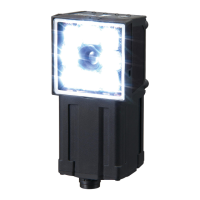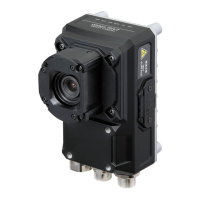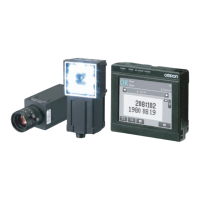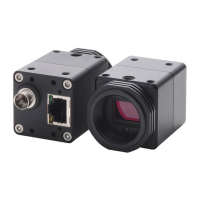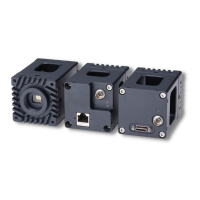Outputting Data and Controlling Operation through EtherNet/IP
FQ2 User’s Manual
307
Connecting through Ethernet
9
• Response Area
• Output Area
● Accessing Communications Areas by Specifying I/O Memory Addresses
AT specifications can be set for variables to individually specify the I/O memory addresses that are assigned in
the communications areas.
1 Setting Tag Sets (Network Configurator)
Specify the tag names in the PLC directly by using the I/O memory addresses that are assigned in the
communications areas. (Output tags are specified for the input connections to the Sensor and input tags
are specified for output connections to the PLC.)
Setting Examples
Output tag: D0
Input tag: D100
2 Setting Variables (Sysmac Studio)
Define variables with AT specifications to the I/O memory addresses that are assigned in the communi-
cations areas as shown below.
Setting Examples
Variable: a (AT specification: D0.0)
Variable: b (AT specification: D0.1)
Variable: c (AT specification: D0.15)
Variable: d (AT specification: D1.0)
3 Setting Connections
Set the connections as shown in the following table.
Signal name Variable name
FLG EIPInput.StatusFlag.F[0]
BUSY EIPInput.StatusFlag.F[1]
READY EIPInput.StatusFlag.F[2]
OR EIPInput.StatusFlag.F[3]
RUN EIPInput.StatusFlag.F[4]
ERR EIPInput.StatusFlag.F[15]
GATE EIPInput.StatusFlag.F[16]
Command code EIPInput.CommandCodeEcho
Response code EIPInput.ResposeCode
Response data EIPInput.ResposeData
Signal name Variable name
Output data 1 EIPInput.OutputData[0]
· · ·
Output data 8 EIPInput.OutputData[7]
Originator device (PLC) settings Target device (Sensor) settings
Input tag set: D0 Output tag set: Input101
Output tag set: D100 Input tag set: Output100

